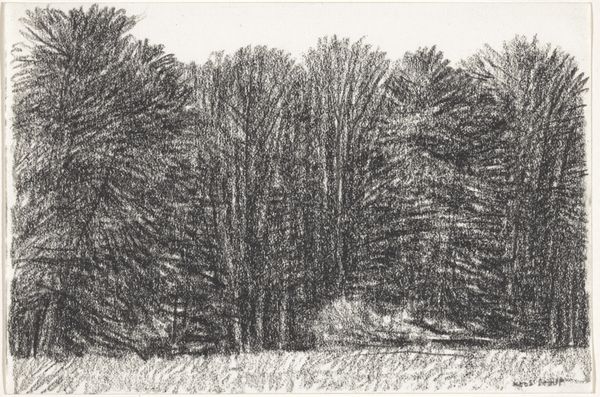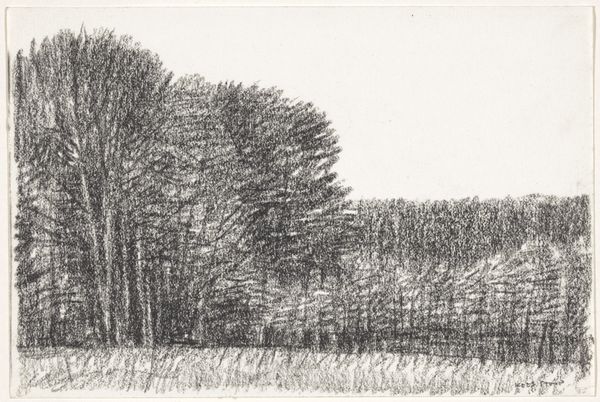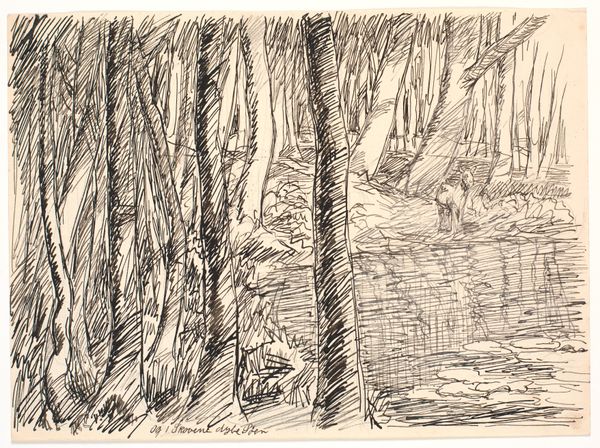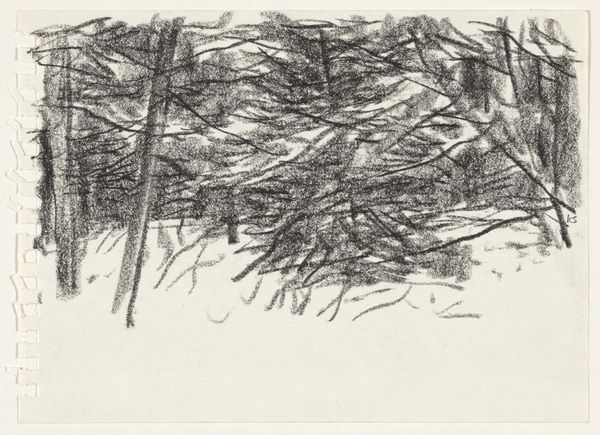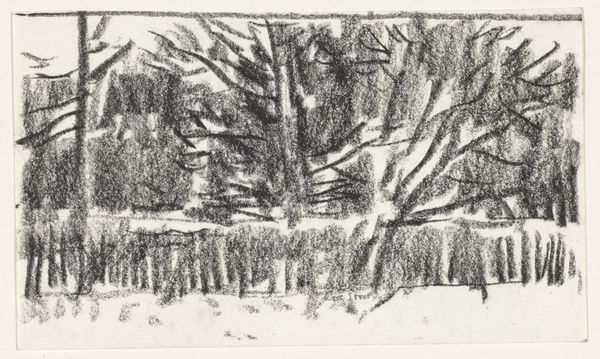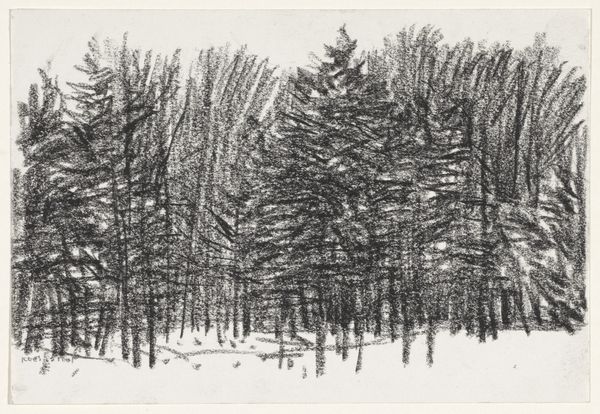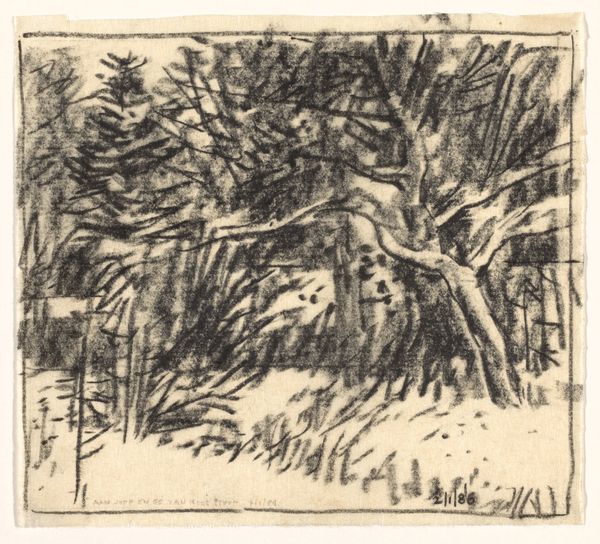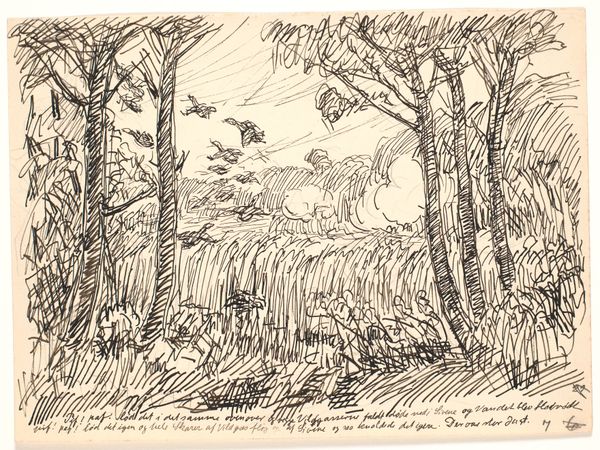
Vridsløsemagle. Trægruppe med mark foran. Aften 1931 - 1939
0:00
0:00
drawing, ink
#
drawing
#
landscape
#
ink
#
line
#
realism
Dimensions: 139 mm (height) x 179 mm (width) (bladmaal)
Curator: It strikes me as almost violently pastoral. Is that oxymoronic? All that slashing ink above and that field, meticulously, calmly drawn. Editor: This is "Vridsløsemagle. Trægruppe med mark foran. Aften," or "Vridsløsemagle. Group of Trees with Field in Front. Evening," an ink drawing on paper created sometime between 1931 and 1939 by John Christensen. You've keyedin, I think, on that real tension present within. Curator: Tension’s absolutely the word! The upper register, almost abstract, those brutal scribbles suggesting, what? Wind? Mental unrest? And then, the deliberate lines in the foreground, those blades of grass, like individual acts of… resistance? Or stubborn, quiet survival? It makes me wonder about land use, privatization of resources, you know, what the drawing *doesn't* immediately tell us. Who gets access to that 'field'? What labor goes unpaid? What communities get displaced by that seemingly harmless power line? Editor: Interesting. Well, let's contextualize the era a bit. Christensen was working during a time of significant socio-political upheaval. The rise of fascism was looming large, and artists were grappling with questions of identity, place, and the role of art in a rapidly changing world. So how might this work respond to those pressures? Is this quiet "resistance," or is it actually something closer to melancholic resignation in the face of progress and change? Think about the role the rural played as national identity formation at the time... Curator: I do agree, though. Even knowing its historical context, those aggressively chaotic lines continue to feel deeply contemporary, that raw emotional honesty of it! Editor: The choice of ink, a medium allowing both delicate detail and such forceful expression, adds another layer of complexity. The image's success lies in its balance between realism and what we might term "expressionistic unease." How Christensen renders an observed landscape becomes very subjective—more than merely topographic, the piece registers feelings that get carried to present-day readings. Curator: Absolutely, that feeling, and those formal juxtapositions invite questions and challenges about landscape traditions to this day. Editor: A perfect piece for contemplation. Thanks for taking the time.
Comments
No comments
Be the first to comment and join the conversation on the ultimate creative platform.
